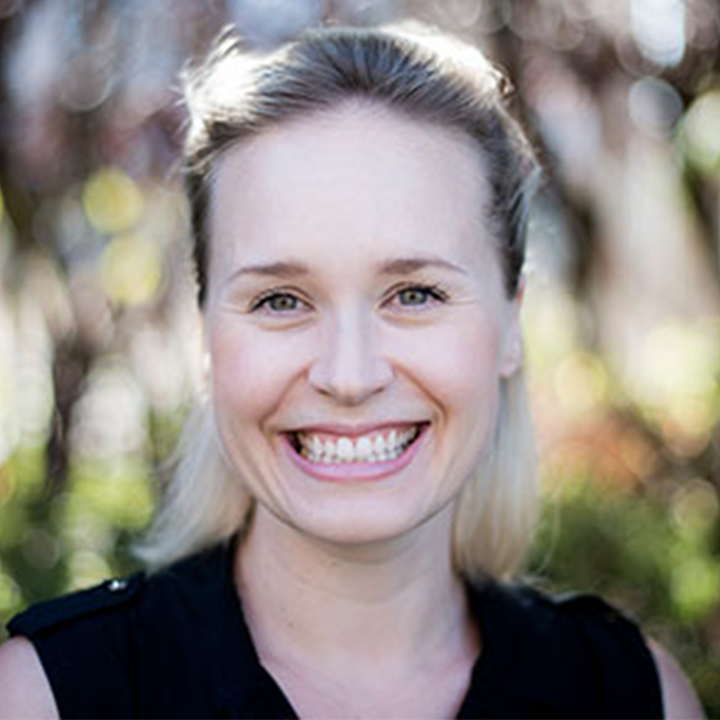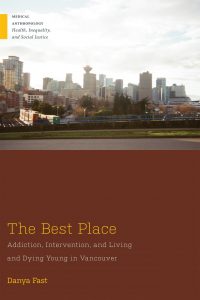
Vancouver may be considered one of the “best places” to live, but many young people living in the city are facing unprecedented challenges standing at the intersection of a housing affordability crisis and a toxic drug poisoning public health emergency.
For the past 15 years, Dr. Danya Fast, an assistant professor at UBC’s department of medicine and research scientist at BC Centre on Substance Use, has been following the lives of young people who use drugs in Vancouver. Those experiences are captured in her new book, The Best Place: Addiction, Intervention, and Living and Dying Young in Vancouver, which traces the lives and deaths of one group of young people trying to navigate various services and systems as a public health overdose emergency sweeps B.C.
We spoke with Dr. Fast about her experience writing this book and new ways to think about how we support young people who use substances.

Your book spans 15 years of fieldwork and interviews with youth. Is there anything you would want to say to your younger self when you first started this work?
I had no idea that the timeline would end up spanning 15 years. This book became a very different book from the one I originally set out to write.
The young people who I had formed such close relationships with started to die as we entered the overdose public health emergency in 2016. I realized around that time that this book wasn’t only going to be about living in Vancouver as a young person who uses drugs, but also about dying young. At the time that I started the research that informs this book, none of us could have imagined the sort of loss that would become a part of my research. As I was doing a lot of the writing from 2019 to 2021, I had to change so many endings as people were passing away.
I probably would tell myself to cherish the moments I had with these young people even more fiercely. In the beginning of the crisis, when less people had died, I often didn’t realize that each conversation could be — and in many cases was — the last time I would see this person.
Even with all this loss, I always want to emphasize that there are so many moments of laughter, joking, and connection as a part of work like this. I absolutely treasure the relationships I built with these young people, who I consider my collaborators, and the time spent with them learning about their worlds.

experiences of young people who
use drugs amidst B.C.’s public
health overdose emergency.
What did you set out to achieve with your book?
The book is really for the young people who are featured in it, and the people who love and care for them. But I also want readers to feel like they got to know a group of young people in a particular time and a particular place. Because so many of them are no longer with us, it’s a way of remembering them.
I hope that the book not only humanizes young people who use drugs, but also puts faces to the overdose emergency itself. We’ve lost so many young people under 29 years of age. I hope this book illustrates how devastating this crisis has been and continues to be.
What do you think readers might be surprised to learn from in your book?
I hope it provides a different perspective than a lot of the work that is out there, which often focuses on addressing the risks and harms of substance use, and helping or saving people who use drugs. Instead, this book foregrounds young people’s perspectives on drug use as something that is opening up different kinds of possibilities for them, and something that they don’t necessarily want help with stopping.
What are some systemic barriers that your book examines when it comes to young people accessing effective care?
I tried to balance providing some interpretation and context with centering young people’s stories, narratives, and theorizations of the systemic barriers they experienced. Their stories gesture to various systemic issues including colonialism, entrenched poverty, government care involvement, and cycling through foster care and group homes.
The book looks closely at housing and homelessness. For some young people, government-subsidized supportive housing can be a continuation of a sense of homelessness, even though they’re technically housed. The importance of connection and sociality for young people is sometimes undermined by housing environments, treatment, and programming.
Many of the Indigenous youth that I worked with touch on their lived experiences of colonialism in Vancouver, which is a settler colonial city. Their stories underlined strong senses of distrust in health services, drug treatment, and housing, and how this distrust could inform moments of refusal to engage with systems.
What do you hope to do next, whether it’s with your research or advocacy?
I’m currently expanding my research to include younger individuals between 11 and 17 years old, who are still accessing pediatric healthcare services. I’m talking to them and their caregivers about what they want from the services and systems that they interface with. We want to consider what clinicians, providers, managers and policymakers can do to support overdose prevention among these very young individuals.
Another project that I’m working on at the moment is about reimagining recovery or “recovery futurisms”. Here we are working together with young people to redefine recovery beyond just abstinence via treatment engagement, thinking about recovery as part of a continuum of care and healing. We want to emphasize young people’s own strategies for healing and for wellness in the context of past or current substance use. We need to support young people as they pursue healing, however they define that.